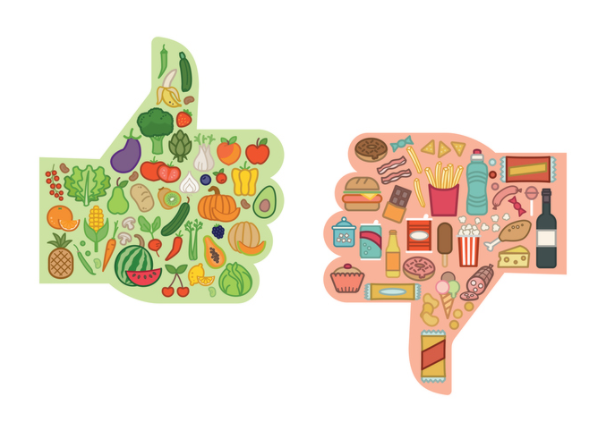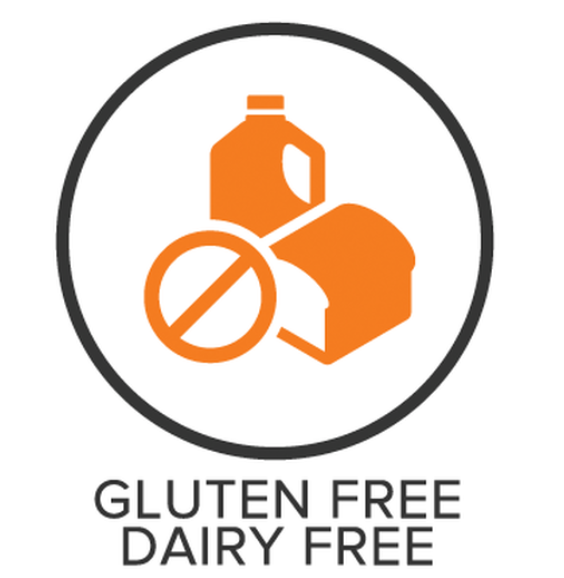


Arthritis Aches and Pains? These Foods Might Help
Arthritis Aches and Pains? These Foods Might Help
Wild-caught salmon and sardines are full of omega-3 fatty acids which have been found to help reduce joint inflammation. These fish are also rich in vitamin D. Studies have linked vitamin D deficiency to rheumatoid arthritis. Try adding sardines to a salad for lunch or cooking a salmon dinner once or twice a week. If you can’t tolerate fish, olive oil is another great source of omega-3’s.
Broccoli
One of the healthiest (and most delicious) vegetables widely available is broccoli. It contains a special compound called sulforaphane, which in studies has been shown to block cells that form rheumatoid arthritis. You can eat broccoli raw, cooked, or even add broccoli as a side to your salmon dinner.
Spinach
Dark leafy greens such as spinach are rich in antioxidants which help alleviate inflammation. Spinach is high in kaempferol, which has been shown to decrease osteoarthritis and rheumatoid arthritis inflammation. Just like broccoli, you can eat spinach raw or cooked by making a salad or sauteing the greens as a side dish.
Avoid:
Added Sugars
As delicious as they taste, added sugars should be avoided when dealing with an inflammatory disease such as arthritis. It can be hard to part ways with the soda, ice cream, candy, etc., but consuming these foods has been found to worsen rheumatoid arthritis symptoms. Try to reach for antioxidant-rich fruits such as berries instead of candy when you have a sweet tooth.
Gluten
Gluten is a protein found in bread products that has been known to trigger an inflammatory response in the body. A few studies have shown that people who suffer from celiac disease may be at greater risk of developing rheumatoid arthritis and vice versa. Therefore, it is encouraged to steer clear of gluten to avoid an arthritis flare-up, especially for those with a gluten sensitivity/intolerance.
Vegetable Oils
Vegetable oils that are high in omega-6 fatty acids, such as canola, safflower, and sunflower oil can worsen arthritis symptoms. Consuming these oils in excess can alter the omega-6 and omega-3 ratios in your body which increases inflammation. Try cooking with healthier oils such as olive oil or avocado oil to keep your omega-3 levels up and your omega-6 levels low.
Sources:
Arthritis Foundation: 12 Best Foods For Arthritis. Retrieved from https://www.arthritis.org/health-wellness/healthy-living/nutrition/healthy-eating/12-best-foods-for-arthritis
Johnson, J. (2019, June 20). Gluten and rheumatoid arthritis: Foods to eat and avoid. Retrieved from https://www.medicalnewstoday.com/articles/325522
Kubala, J. (2020, September 24). 8 Foods and Beverages to Avoid with Arthritis. Retrieved from https://www.healthline.com/nutrition/foods-to-avoid-arthritis
Link, R. (2017, October 04). The 10 Best Foods to Eat If You Have Arthritis. Retrieved from https://www.healthline.com/nutrition/10-foods-for-arthritis
Macon, B. (2020, August 26). Arthritis: Causes, Signs, and Diagnosis. Retrieved from https://www.healthline.com/health/arthritis
Nichols, H. (2017, November 14). Arthritis: Causes, types, and treatments. Retrieved from https://www.medicalnewstoday.com/articles/7621

Can’t Think Straight? Tips to Help Eliminate Brain Fog
Can’t Think Straight? Tips to Help Eliminate Brain Fog
Sleep
We truly underestimate the value of sleep in our modern world. Our brains need sleep to rest and reboot for the following day. Did you know if we don’t get at least 7-8 hours of sleep per night, our cognitive health suffers? So instead of staying up for one more episode of your favorite TV show, turn out the lights and save it for the next day.Exercise
You don’t have to start training for the Olympics, but even a little bit of physical activity on a daily basis is great for our physical and mental health. Exercise releases cytokines and endorphins which are chemicals that rejuvenate brain cells and elevate our mood. Going on a daily walk around your neighborhood is a great way to incorporate physical activity into your everyday routine.Diet
It should come as no surprise that the foods we eat directly impact our mental and physical health. It’s important to eat a clean diet full of fresh fruits and veggies and high-quality meats to nourish our bodies and brains. Try to avoid or limit highly inflammatory processed foods that contain sugar, gluten, and dairy. I’ve created a previous blog post that highlights which foods you should include in your diet for optimal brain health. Sources: Egler, J. (2020, August 12). Brain Fog: 5 Steps to Improve Brain Functioning and Overall Health. Retrieved from https://www.parsleyhealth.com/blog/beat-brain-fog/ Higuera, V. (2018, May 23). Brain Fog: 6 Potential Causes. Retrieved from https://www.healthline.com/health/brain-fog Rodriguez-Cayro, K. (2019, July 01). How Do You Treat Brain Fog? If You’re Feeling Super Out Of It, These 7 Tips Might Help. Retrieved from https://www.bustle.com/p/how-do-you-treat-brain-fog-if-youre-feeling-super-out-of-it-these-7-tips-might-help-3203663
Foods for a Healthier Heart
Foods for a Healthier Heart
1. Fatty Fish
Pop open that can of sardines and get your daily dose of omega-3s. The omega-3 fatty acids found in fish such as tuna and salmon, as well as olive oil, help reduce inflammation in the body. Fish is also a great source of protein with a low percentage of saturated fat. The American Heart Association (AHA) recommends eating a 3.5-ounce serving of fatty fish twice a week.
2. Whole Grains
Whole grains such as brown rice, oats, and quinoa are a great source of soluble fiber. Soluble fiber keeps fats from building up in the body which in turn prevents clogged arteries. Make sure you opt for whole grains instead of refined grains, such as white flour and bread, which don’t reap the same benefits.
3. Leafy Greens
Vegetables such as spinach, kale, and collard greens are rich in vitamin K and antioxidants which helps protect arteries and encourage proper blood clotting. Leafy greens are also low in calories but rich in vitamins and minerals to help moderate weight and blood pressure.
4. Berries
Blueberries, raspberries, blackberries, and strawberries are another excellent source of antioxidants. The antioxidants found in these fruits help prevent oxidative stress and inflammation in the body, making berries a guilt-free snack to satisfy a sweet tooth.
5. Nuts
Walnuts, almonds, pecans, hazelnuts, and pistachios are all nutrient-dense heart-healthy nuts. These nuts are full of fiber and protein which helps keep you fuller longer while also providing essential vitamins and minerals. Do try and stick to raw nuts instead of roasted nuts to avoid inflammatory oils.
Sources:
Link, R. (2018, March 5). 15 Incredibly Heart-Healthy Foods. Retrieved from https://www.healthline.com/nutrition/heart-healthy-foods
Railton, D. (2018, May 16). 16 top foods for a healthy heart. Retrieved from https://www.medicalnewstoday.com/articles/321820
Harvard Publishing. (2020, April). 5 foods to eat to help your heart. Retrieved from https://www.health.harvard.edu/heart-health/5-foods-to-eat-to-help-your-heart

Why You Should Avoid Gluten & Dairy
Why You Should Avoid Gluten & Dairy
I know what you’re thinking: no bread or ice cream? The horror. Gluten and dairy are two of the most inflammatory food groups, which is why so many people are cutting these foods out of their diets. But what exactly is so bad about gluten and dairy? Gluten is a protein found in wheat, barley, and rye when eaten develops an inflammatory response in the intestinal tract. Some people are more sensitive to gluten than others, such as those with celiac disease or a wheat allergy.
As for dairy, cow’s milk contains a carbohydrate called lactose, which is a milk sugar made of glucose and galactose. As infants, our bodies were able to break down lactose from our mother’s milk. yet adults lack the digestive enzymes needed to consume dairy. This is why nearly 75% of the world’s population is unable to break down lactose, also known as lactose intolerance.
Even if you don’t suffer from gluten sensitivity, studies have shown that following a gluten-free diet reduces symptoms related to numerous health conditions and may even help prevent certain diseases. Certain autoimmune diseases share common genes and immune pathways with celiac disease; therefore, gluten can induce or worsen autoimmune disease symptoms. Gluten has also been linked to bowel ailments, such as irritable bowel syndrome (IBS) and inflammatory bowel disease (IBD). To top it all off, gluten has been shown to alter gut bacteria, and we should all know from my previous post how important gut health is. There’re so many gluten-free options out there nowadays, it’s easier than ever to follow a gluten-free diet. However, make sure to check the ingredients list before purchasing a gluten-free product, as sometimes the gluten-free alternative is worse than the gluten itself.
The purpose of cow’s milk is to nourish a calf in order to triple in size within a few months. Isn’t it odd that humans are the only species who drink another animal’s milk? Dairy isn’t necessary for optimal health, yet people continue to drink cow’s milk on a regular basis because they believe it’s healthy. Milk can be nutritious since it’s rich in calcium and vitamin D, but it’s also high in sugar. Over consuming sugar is linked to numerous health conditions, as I’ve covered in a previous blog post, and there are numerous plant-based sources that offer the same nutrition. Cow’s milk also contains excess hormones which can cause insulin issues linked to acne, sugar cravings, and poor blood sugar control. All dairy contains IG1, an insulin-growth factor that raises our insulin levels, which results in blood sugar swings. Again, there’s an abundance of dairy alternatives out there, so there’s no excuse not to ditch the dairy.
Sources:
Berry, J. (2019, September 6). Dairy: Is it good or bad for you? Retrieved from https://www.medicalnewstoday.com/articles/326269
Gunnars, K. (2018, November 15). “Is Dairy Bad for You, or Good? The Milky, Cheesy Truth.” Retrieved from www.healthline.com/nutrition/is-dairy-bad-or-good Kubala, J. (2019, March 6). Is Gluten Bad for You? A Critical Look. Retrieved from https://www.healthline.com/nutrition/is-gluten-bad
